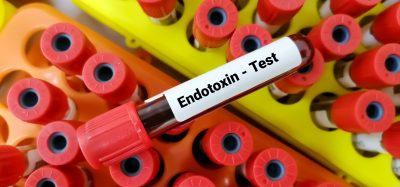Abbott receives CE Mark for new hepatitis test
Posted: 9 November 2011 | European Pharmaceutical Review | No comments yet
Abbott announced it has received CE Marking (Conformité Européenne) in the European Union to market a new, highly sensitive diagnostic test for detection of hepatitis B surface antigen (HBsAg). The test is performed on Abbott’s ARCHITECT® system. Hepatitis B is an inflammatory liver disease caused by the hepatitis B virus (HBV) that may result in liver cell damage.
The World Health Organization (WHO) estimates there are more than 350 million people worldwide living with HBV. The liver cell damage can lead to scarring of the liver (cirrhosis) and increased risk of liver cancer. Like the human immunodeficiency virus (HIV), HBV is transmitted by contact with blood or other body fluids of an infected person, but HBV is 50 to 100 times more infectious than HIV. After six months, continued presence of HBsAg indicates chronic infection and the virus remains in blood and body fluids.
HBsAg assays may be used to help identify acute and chronic HBV infections, to screen blood and blood products, and to aid in the diagnosis of infected pregnant women. Perinatal HBV transmission can frequently be prevented by immunizing the infant at birth.
“The hepatitis B virus is constantly evolving, and it is important to have a test that has the right sensitivity to detect different strains of the virus,” said Dr. Thoai Duong Ly, biologist, Biomnis. “The new ARCHITECT hepatitis B surface antigen test is an important tool in helping to detect mutant strains of the virus.”
The ARCHITECT HBsAg Qualitative II assay is intended to be used as an aid in the diagnosis of HBV infection and as a screening test for donated blood and plasma using the ARCHITECT immunochemistry system. It provides qualitative detection of HBsAg, which is the first serological marker after infection with HBV and appears in the blood between one to 10 weeks after exposure to the virus.
“Our research and assay development in hepatitis demonstrates the role advanced diagnostics technology is playing to enable clinicians to detect infectious diseases rapidly and accurately,” said Brian Blaser, senior vice president, Diagnostics, Abbott. “Introduction of the new ARCHITECT hepatitis B surface antigen assay is another milestone in Abbott’s 40-year history of achievement in hepatitis diagnostics.”
The ARCHITECT HBsAg Qualitative II test is a chemiluminescent microparticle immunoassay (CMIA) that offers seroconversion sensitivity for low-volume testing sites that is equivalent to the high-volume HBsAg blood screening assay performed on Abbott’s PRISM system. The analytical sensitivity of the ARCHITECT assay is 0.017 to 0.022 IU/mL, and the specificity on samples from overall blood donors (serum and plasma) is 99.91 percent. Abbott also has a CE-marked ARCHITECT confirmatory test for samples found repeatedly reactive on the HBsAg Qualitative II assay.
The high sensitivity of the new Abbott test enables clinicians to detect patients with low levels of HBsAg. In addition, the test is able to detect HBsAg mutants.
The ARCHITECT® system offers 12 assays for hepatitis A, B and C outside the US: HBsAg, HBsAg Confirmatory, HBsAg Quantitative, HBeAg, Anti-HBe, HAVAb IgG, HAVAb IgM, Anti-HBc, Anti-HBc IgM, Anti-HBs, Anti-HCV and HCV Ag.
About HBV
Hepatitis B is an inflammatory liver disease caused by the hepatitis B virus that results in liver cell damage. The damage can lead to scarring of the liver (cirrhosis) and increased risk of liver cancer. HBV is endemic in Asia, and the World Health Organization (WHO) estimates there are some 350 million people worldwide living with HBV. The prevalence of HBV infection and modes of transmission vary greatly around the world. Developing countries have a high prevalence of chronic HBV infection, and the most common route of infection is from mother to child at birth or from child to child. In areas of low prevalence, the infection is usually acquired during adulthood through intravenous drug use, high-risk sexual activity and exposure to infected blood and body fluids.
Approximately 90-95 percent of adults infected with HBV develop antibodies and recover within six months. Upon recovery, they develop immunity to the virus and are not infectious to others. Chronic HBV can be treated with interferon and anti-viral medications. The medications do not cure the disease but can significantly reduce HBV-induced liver cell damage.
There are several blood tests for HBV. HBsAg (hepatitis B surface antigen) indicates infection with HBV and capability for transmitting the virus to others. Anti-HBc (antibody to hepatitis B core antigen), indicates current infection with HBV or the individual has been infected at some point in the past. A positive anti-HBs (antibody to HBsAg) result shows immunity to hepatitis B either from a resolved HBV infection or vaccination. Molecular diagnostic tests for HBV are used to quantitate viral load levels for monitoring drug therapy.
About the ARCHITECT Instrument Family
The ARCHITECT family of analyzers includes the i1000 SR and i2000 SR for immunoassay testing, the c4000, c8000, and c16000 for clinical chemistry testing, and the ci4100, ci8200, and ci16200 integrated immunoassay/chemistry systems. Abbott’s unique technologies include the Robotic Sample Handler to prioritize emergency tests; sample clot and bubble detection to verify sampling integrity; and FlexRate and CHEMIFLEX assay technologies. ARCHITECT systems use identical easy-to-use software and common reagents across all members of the family.





